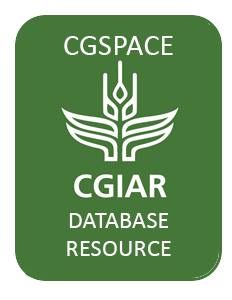Development efforts have increased women's perceived empowerment and freedom, yet have failed to sustainably alter gender norms. There is a lack of research investigating reasons for this anomaly. This study, departing from the conventional approach, tries to fill this gap by employing an…
"This factsheet gives answers on how climate exacerbates root causes of conflict in Sudan, using an impact pathway analysis. Two main impact pathways are identified:
Resource Access and Availability: Climate variability and extreme events are depleting Ethiopia’s land and water…
Acid soils are a major constraint to agricultural productivity in many parts of sub-Saharan Africa, including Ethiopia. Restoring soil pH to optimal ranges for agriculture can have a significant impact on yields, particularly for acid intolerant crops like wheat and barley. The application of…
The goal of this study is to assess the potential of game-based experiential learning in raising awareness and stimulating discussions about groundwater resource systems, the social dilemma in groundwater management, and the need for institutional arrangements (rules) governing this shared…
Agricultural mechanization is less developed in subSaharan Africa (SSA). Even in areas where there are scale-appropriate mechanization services, their use by smallholders (especially by women farmers) is minimal due to various social and economic factors. Following a randomized control trial (…
Much has been written about energy poverty, but there is relatively limited evidence of what determines the gender gap in energy poverty and how it can be overcome in rural areas. This study used Focus Group Discussions, in-depth interviews with farmers and Key Informant Interviews to analyze…
Ethiopia has the largest livestock population in Africa. According to a CSA (2021) livestock sample survey, the country possesses 70.3 million cattle, 42.9 million sheep, 52.5 million goats and 8.1 million camels. The livestock sector contributes about 45% of the agricultural GDP, 18.7% of the…
This technical report presents a comprehensive overview of the pilot initiative for site-specific and season-smart fertilizer recommendations (SSFR) implemented during the 2022/2023 wheat farming season in Ethiopia. The initiative, led by key demand partners such as Digital Green in…
Seasonal price variability for cereals is two to three times higher in Africa than on the international reference market. Seasonality is even more pronounced when access to appropriate storage and opportunities for price arbitrage are limited. As smallholder farmers typically sell their…
Understanding the human-forest relationship is key to sustainable development and forest management. The increase of agricultural land expansion mainly focuses on satisfying the competing interest amongst stakeholders and rural households, which neglects the impact of forest losses. The study…
A stakeholder consultation workshop was conducted by the CGIAR Initiatives on Diversification in East and Southern Africa (Ukama Ustawi) and Gender Equality on 31 January 2023 at the International Livestock Research Institute (ILRI), Addis Ababa, Ethiopia. The workshop aimed to identify and…
The study on satisfaction of experts and farmers with the advisory service on Site-Specific Fertilizer Recommendations (SSFRs) and climate information services (CIS) was conducted to assess the level of satisfaction of these partners with the various training, SSFRs advice, and climate forecast…

